Philippine stews, known for their hearty and comforting flavors, reflect the country's rich culinary heritage and diverse regional influences. Sinigang, a sour soup, features a tamarind-based broth with vegetables and a choice of meat or seafood. Kare-kare delights with its peanut-based sauce, tender oxtail or pork, and a medley of vegetables. Adobo, considered the national dish, offers a savory blend of soy sauce, vinegar, garlic, and spices, simmered with chicken, pork, or beef. These stews are cherished for their rich flavors, nourishing ingredients, and cultural significance, providing a taste of the Philippines' culinary tradition and culinary diversity.
Sinigang
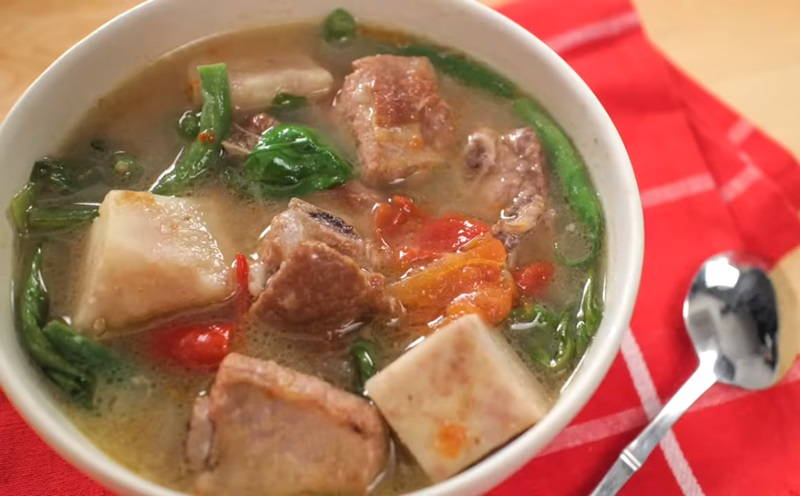
Sinigang is a traditional Filipino stew that is beloved for its tangy and savory flavors. It is characterized by its sour taste, which is achieved by using tamarind as the main souring agent. The dish typically consists of a variety of meats, such as pork, beef, shrimp, or fish, cooked in a flavorful broth with an assortment of vegetables. The broth is made by simmering the meat with tamarind pulp, onions, tomatoes, and various seasonings, resulting in a rich and flavorful base. The vegetables added to the stew can vary, but commonly include kangkong (water spinach), eggplant, radishes, and long beans. The combination of the sour broth and the fresh vegetables creates a refreshing and comforting dish.
Kare-Kare
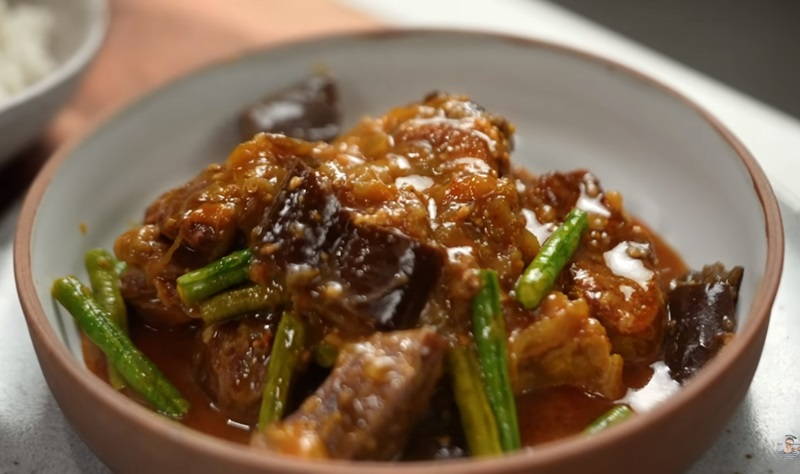
Kare-Kare is a traditional Filipino stew that is renowned for its rich and flavorful taste. This dish is typically made with oxtail, tripe, and various vegetables, all cooked in a thick peanut sauce. The combination of tender meat and crunchy vegetables creates a delightful contrast of textures. The peanut sauce is the star of the show in Kare-kare. It is made by grinding roasted peanuts and rice into a fine powder, which is then mixed with annatto seeds, garlic, and onions. The sauce is cooked slowly to develop its nutty and aromatic flavors, resulting in a velvety and creamy consistency. Kare-Kare is often served with bagoong, a fermented shrimp paste, which adds a salty and savory kick to the dish. The vibrant orange color of the sauce, coupled with the vibrant green of the vegetables, makes Kare-Kare an appealing and visually enticing dish.
Dinuguan
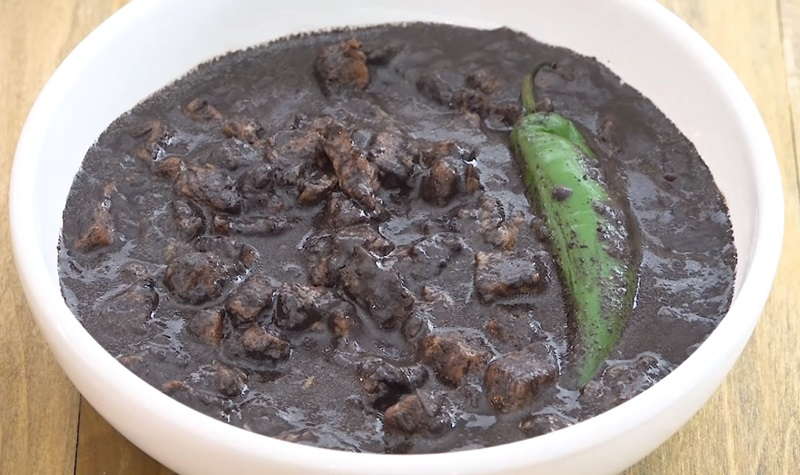
Dinuguan, also known as "chocolate meat," is a traditional Filipino stew that is renowned for its rich and unique flavor. This dish is made from pork meat and offal, such as lungs, liver, and intestines, which are simmered in a thick, dark sauce made from pig's blood, vinegar, and various spices. The process of cooking Dinuguan involves sautéing the meat and offal until they are tender and then adding the pig's blood mixture. This gives the stew its distinct dark color and velvety texture. The vinegar adds a tangy and slightly sour taste, which helps balance the richness of the blood and meat.
Laing (food)
-1703084566.jpg)
Laing is a popular Filipino stew that originates from the Bicol region in the Philippines. It is a dish made from taro leaves cooked in coconut milk and flavored with various spices and ingredients. The key ingredient, taro leaves, are known for their distinct flavor and slightly bitter taste. To prepare Laing, the taro leaves are first washed and then simmered in coconut milk until they become tender. The dish is then seasoned with shrimp paste, garlic, onions, and chili peppers, which add a savory and spicy kick to the stew. Some variations of Laing may also include other ingredients like pork, shrimp, or dried fish to enhance the flavor. The combination of the earthy taro leaves, creamy coconut milk, and aromatic spices creates a rich and flavorful stew.
Kaldereta

Kaldereta is a popular Filipino stew known for its rich and savory flavors. This dish is typically made with tender chunks of meat, such as beef or goat, simmered in a thick tomato-based sauce. The meat is first marinated in a mixture of soy sauce, vinegar, and spices, which helps to enhance its taste and tenderness. The sauce of Kaldereta is what makes it truly special. It is made with a combination of tomatoes, onions, garlic, and liver spread, giving it a unique depth of flavor. To add a bit of heat, chili peppers are often added, although the level of spiciness can be adjusted to personal preference. Aside from the meat, Kaldereta also contains a variety of vegetables, such as potatoes, carrots, and bell peppers, which add texture and color to the dish. These vegetables are simmered in the sauce until they are soft and infused with the flavors of the stew.
Balbacua
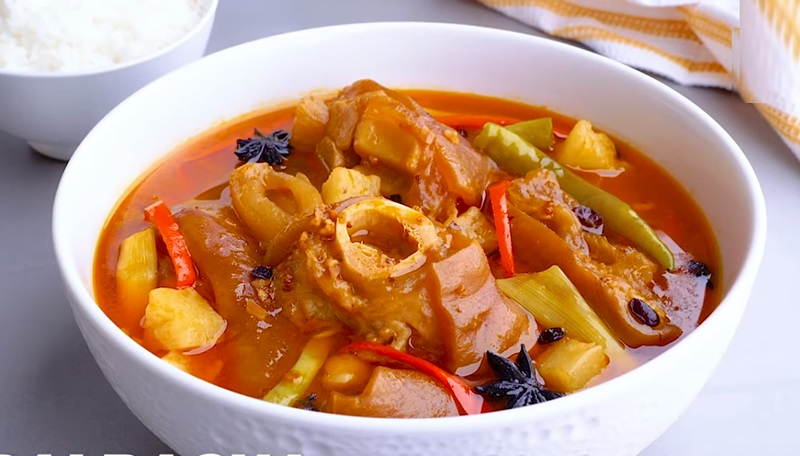
Balbacua is a traditional stew originating from the southern part of the Philippines, specifically Cebu. This flavorful dish is known for its rich and hearty flavors. The main ingredient of Balbacua is slow-cooked beef, typically using the face and the tendons, which are simmered for several hours until tender and flavorful. The stew is then infused with a variety of spices and seasonings, including garlic, onions, ginger, and star anise. To enhance the flavors, Balbacua is often cooked with banana blossoms, green onions, and other vegetables, which add a touch of freshness and texture to the dish.
Bulalo

Bulalo is a hearty and flavorful stew that is considered one of the Philippines' most beloved dishes. This dish originates from the province of Batangas and is known for its rich and comforting flavors. The star ingredient of Bulalo is beef shank, which is simmered for hours until it becomes tender and succulent. The meat is cooked with a variety of vegetables such as corn, cabbage, and potatoes, which adds a delightful texture and freshness to the stew. What sets Bulalo apart from other stews is the distinct broth it is cooked in. The beef shanks release their natural flavors, creating a flavorful and aromatic broth that is deeply satisfying. The stew is traditionally seasoned with fish sauce, garlic, and black pepper.
Puchero
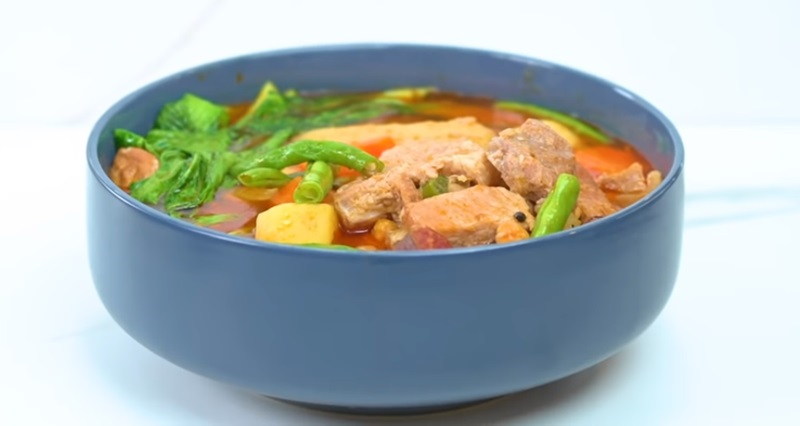
Puchero is a traditional Filipino stew that is known for its hearty and flavorful combination of ingredients. This dish has its roots in Spanish cuisine, as it was introduced to the Philippines during the colonial era. Puchero is typically made with a variety of meats such as beef, pork, and chicken, which are simmered together with vegetables like cabbage, carrots, and beans. What sets Puchero apart from other stews is its distinct flavor profile. The combination of meats and vegetables creates a rich and savory broth that is enhanced by the addition of spices and herbs. Common seasonings include garlic, onions, bay leaves, and peppercorns.
Mechado
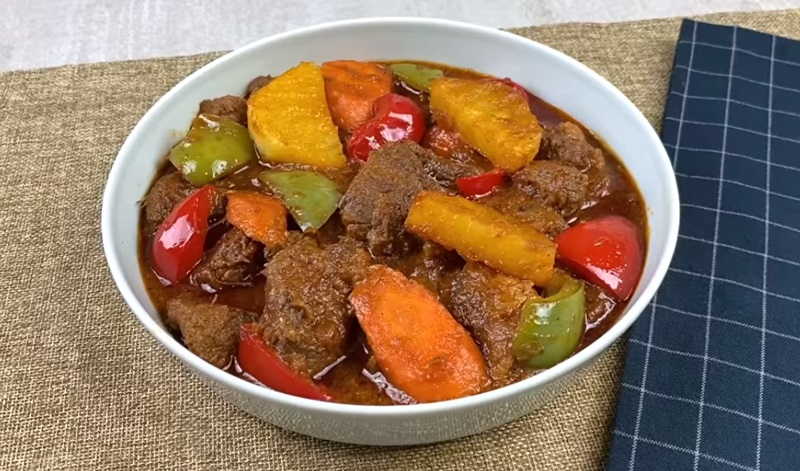
Mechado is a traditional Filipino stew that combines influences from Spanish cuisine with local flavors. This hearty dish is typically made with tender beef chunks, marinated in soy sauce and citrus juices, then simmered with onions, garlic, and tomatoes. The meat is slowly cooked until it becomes fork-tender and infused with rich flavors. What sets Mechado apart is the addition of potatoes and carrots, which add a wonderful sweetness and texture to the dish. These vegetables are simmered alongside the beef, absorbing the savory sauce and enhancing the overall taste.
Nilaga
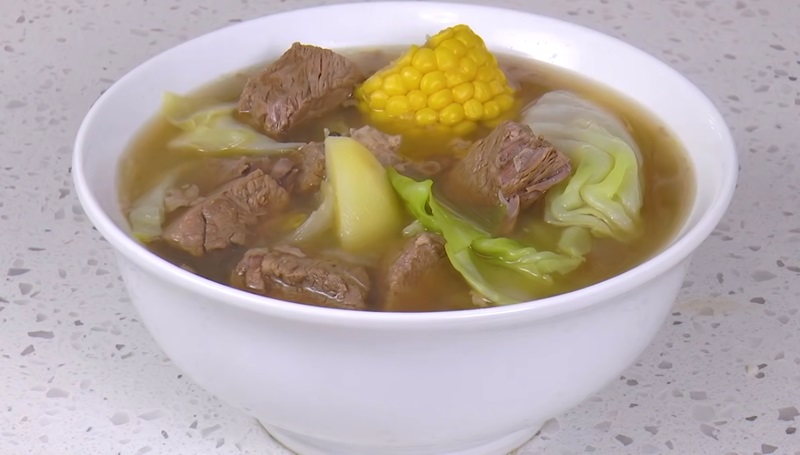
Nilaga is a traditional Filipino stew known for its simplicity and comforting flavors. It is a dish that is often enjoyed by Filipino families, especially during colder months or rainy days. The word "nilaga" itself means "boiled" in Filipino, which perfectly describes the cooking process of this dish. The key ingredients of Nilaga are usually beef or pork, along with various vegetables such as cabbage, potatoes, carrots, and green beans. These ingredients are simmered together in a flavorful broth, often made with bone marrow or beef stock, until they become tender and infused with the rich flavors of the broth. What sets Nilaga apart from other stews is its emphasis on the natural flavors of the ingredients. The simplicity of the dish allows the taste of the meat and vegetables to shine through, making it a comforting and satisfying meal.
Callos a la Madrileña
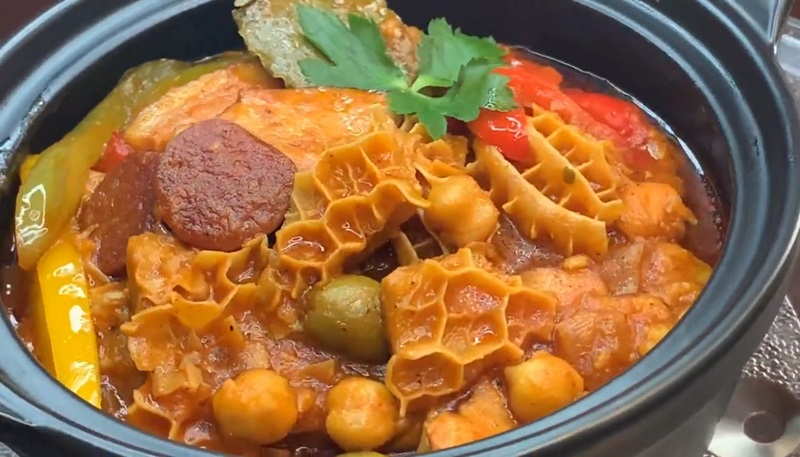
Callos a la Madrileña is a popular stew in the Philippines that has its roots in Spanish cuisine. Prepared with tender beef tripe, chorizo de Bilbao, chickpeas, and bell peppers, it simmers in a luscious tomato-based sauce infused with a medley of aromatic spices. The Filipino twist often includes coconut milk, enhancing the stew's creaminess and depth of flavor. Served hot and hearty, this culinary delight represents a harmonious blend of Spanish culinary heritage and Filipino ingenuity.
Pinangat na isda

Pinangat na Isda is a traditional Filipino dish celebrated for its delightful combination of sour and savory flavors. This regional specialty, hailing mainly from Southern Luzon, particularly Bicol, features fish, often small varieties like sapsap or tilapia, enveloped in layers of taro leaves. The dish is meticulously seasoned with fish bagoong (fermented fish sauce), ginger, and sometimes siling labuyo (bird's eye chili) for a hint of heat. What makes Pinangat distinct is the use of gata (coconut milk) and a souring agent like tamarind, kamias (bilimbi), or calamansi, infusing the stew with a tantalizing tanginess. The ingredients are carefully wrapped in taro leaves, forming neat parcels, and simmered until the fish is tender and the flavors meld.
Pinapaitan
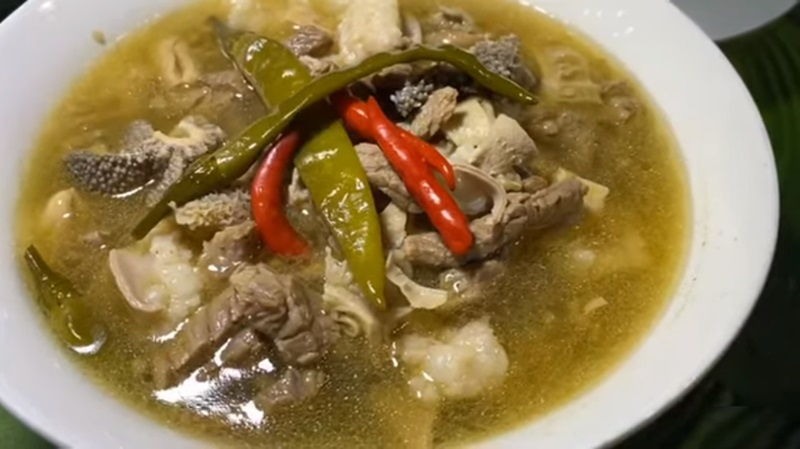
Pinapaitan is a traditional Filipino stew known for its rich and bold flavors. Originating from the Ilocos region in the Philippines, this dish is made from the offal parts of a goat or cow, such as the liver, tripe, and intestines. The name "pinapaitan" comes from the word "pait," which means bitter in Filipino. This refers to the distinct bitter taste that comes from the bile of the animal's gallbladder, which is used as a key ingredient in the stew. The bitterness is balanced out by the combination of spices and herbs, including ginger, garlic, onions, and chili peppers. Pinapaitan is typically cooked by first sautéing the offal in aromatics until browned. The bitter bile is then added, along with water or broth, and simmered until the flavors meld together. The result is a hearty and savory stew with a complex taste profile.
Cansi
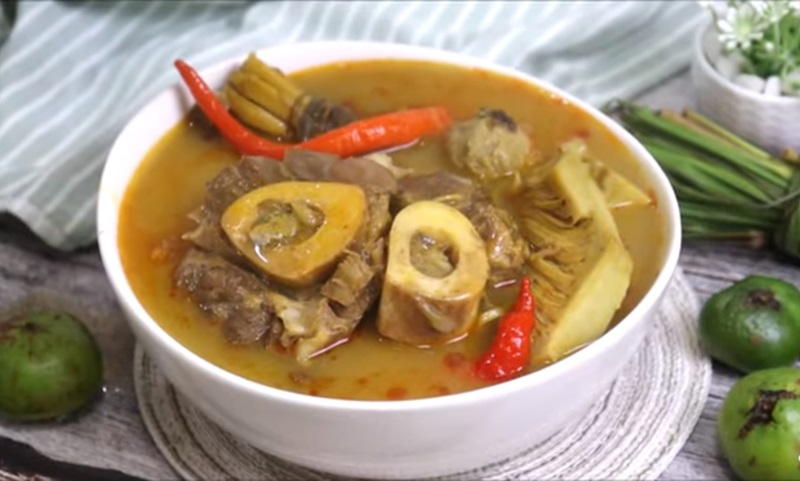
Cansi is a traditional Filipino stew that originated in the province of Negros Occidental in the Philippines. It is a delicious and hearty dish that features tender beef shanks and bone marrow, slow-cooked in a tangy and flavorful broth. The stew is typically made with a combination of tamarind juice, lemongrass, and annatto, giving it a distinct sour and savory taste. The beef shanks are simmered for several hours until they become incredibly tender, allowing the flavors to meld together and create a rich and satisfying broth.
Kadyos, Baboy, Kag Langka
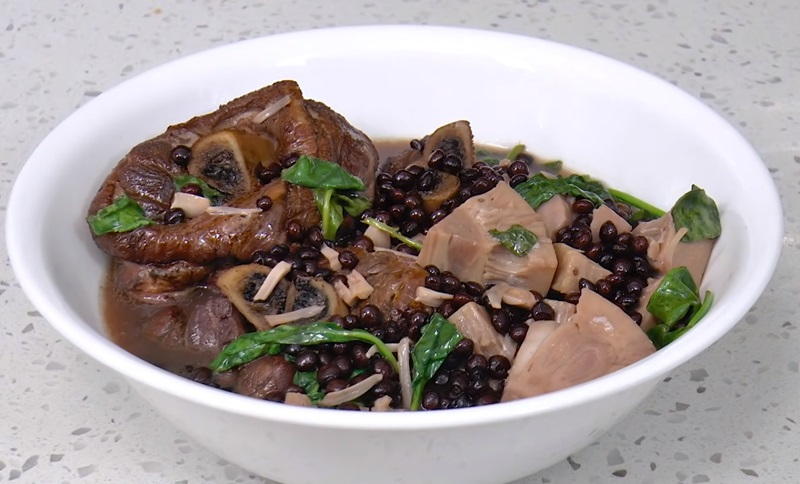
Kadyos, Baboy, Kag Langka is a flavorful Filipino dish originating from the Western Visayas region. This hearty stew brings together diverse ingredients, featuring Kadyos (pigeon peas), Baboy (pork), and Langka (jackfruit). The pigeon peas provide a nutty undertone, complementing the richness of pork, which is often simmered until tender. The addition of jackfruit adds a subtle sweetness, creating a harmonious blend of tastes. Enhanced with local spices, this dish is typically cooked in a savory broth.
Sarsiado
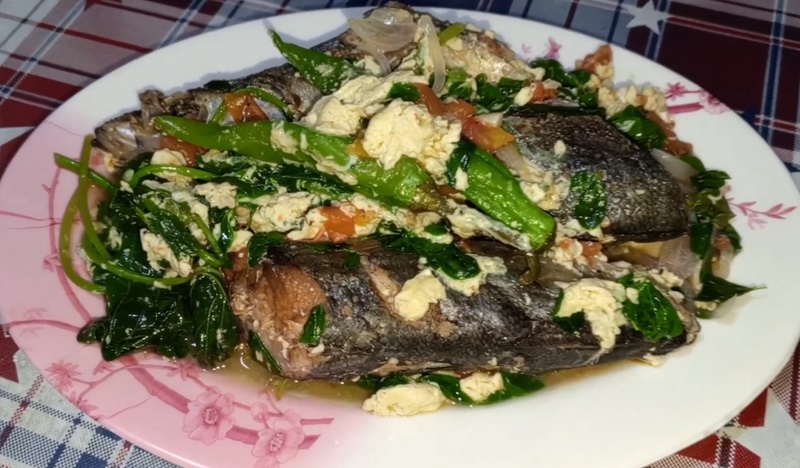
Sarsiado is a traditional Filipino stew dish that is known for its rich and flavorful taste. It is a popular dish in the Philippines, especially during special occasions and family gatherings. The main ingredient of Sarsiado is usually fish, particularly bangus or milkfish, although other seafood like shrimp or squid can also be used. The fish is first marinated in a mixture of vinegar, soy sauce, and various spices to enhance its flavor. The fish is then cooked in a savory tomato-based sauce, which is made by sautéing garlic, onions, and tomatoes. The sauce is seasoned with fish sauce or patis, and then simmered until it thickens. What sets Sarsiado apart from other Filipino stews is the addition of beaten eggs, which are poured over the sauce just before serving. The eggs create a creamy and velvety texture, binding the flavors together.
Lauya
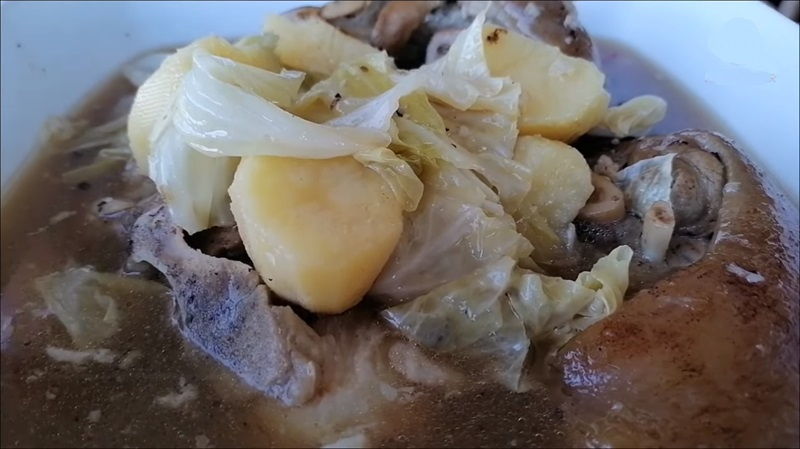
Lauya is a traditional Filipino stew that originated from the province of Batangas in the Philippines. It is a hearty and flavorful dish typically made with beef shanks or bone-in beef cuts, simmered for hours to achieve tender and succulent meat. The stew is often cooked with a variety of vegetables such as cabbage, carrots, potatoes, and green beans, which add a delightful texture and taste. The dish is often seasoned with fish sauce or patis, which adds a unique umami taste.
Pork Guisantes

Pork Guisantes is a flavorful and hearty Filipino stew that showcases the country's love for pork and peas. This dish consists of tender chunks of pork simmered in a thick tomato-based sauce with peas, creating a delightful blend of savory and slightly sweet flavors. To start, the pork is usually marinated in a mixture of soy sauce, vinegar, and aromatic spices like garlic and black pepper, which helps to infuse it with a rich and robust taste. The marinated pork is then browned in a hot pan to enhance its flavor and lend a slightly caramelized texture. Next, the pork is combined with a tomato sauce base, which is typically made by sautéing onions and garlic until fragrant, then adding tomato sauce and broth. This combination creates a luscious sauce that coats the pork and infuses it with a tangy and slightly sweet taste. The addition of peas adds a burst of freshness and vibrant color to the dish, as well as a subtle sweetness that complements the savory flavors of the pork and tomato sauce. The stew is then simmered until the pork is tender and the flavors meld together beautifully.
Linat-an
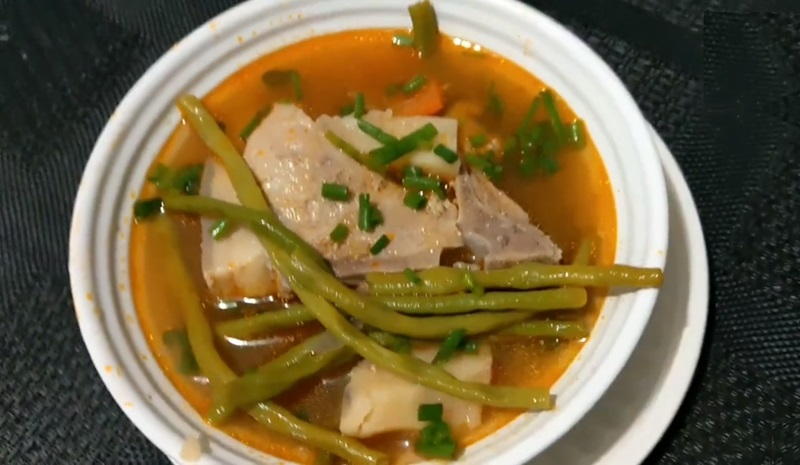
Linat-an is a traditional stew from the Philippines that is bursting with flavors and ingredients. This hearty dish is commonly cooked in the Visayas and Mindanao regions and is known for its rich and comforting taste. The base of linat-an is usually made from a combination of various vegetables such as taro leaves, squash, string beans, and okra. Meat or seafood is then added to give the stew its protein component. It can be made with pork, beef, chicken, or fish, depending on personal preference. Lemongrass and other aromatic herbs and spices like ginger and garlic, give the dish a distinct and appetizing aroma. These ingredients are often pounded or crushed to release their flavors into the stew. Linat-an is typically cooked slowly over a low fire, allowing the flavors to meld together and the meat to become tender.
Kadyos, Manok, Kag Ubad
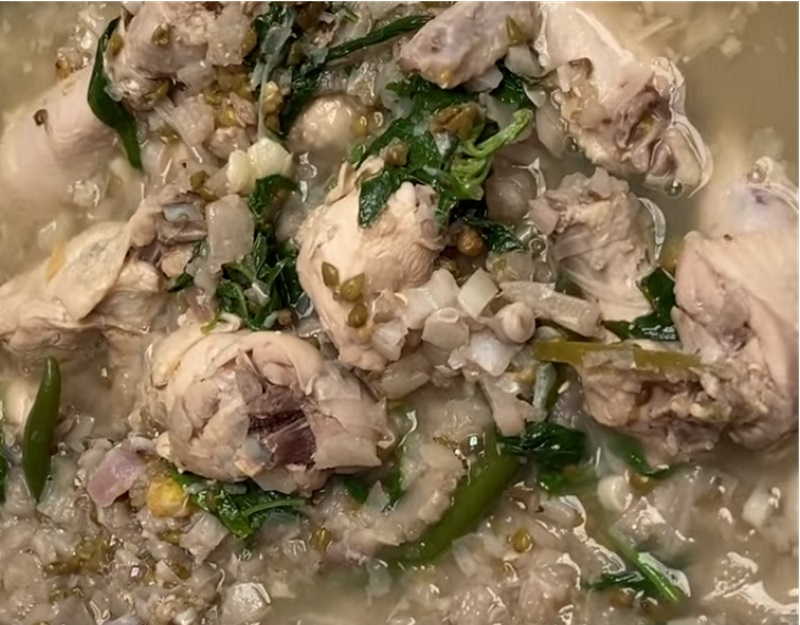
Kadyos, Manok, Kag Ibad is a traditional Filipino stew that originates from the Western Visayas region in the Philippines. This hearty and flavorful dish is made with three main ingredients: kadyos (pigeon peas), manok (chicken), and ubad (banana pith). The dish starts by sautéing garlic, onions, and tomatoes in oil until fragrant. Then, the chicken pieces are added and browned to enhance the flavor. Next, the kadyos and ubad are added to the pot along with water or broth. The stew is simmered until the chicken is tender and the flavors of the ingredients have melded together. The kadyos provides a nutty and earthy taste, while the chicken adds richness and meatiness. The ubad, or banana pith, adds a slightly crunchy texture and a mild flavor that complements the other ingredients.









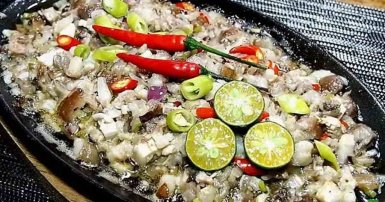



-1709813013.jpg)


